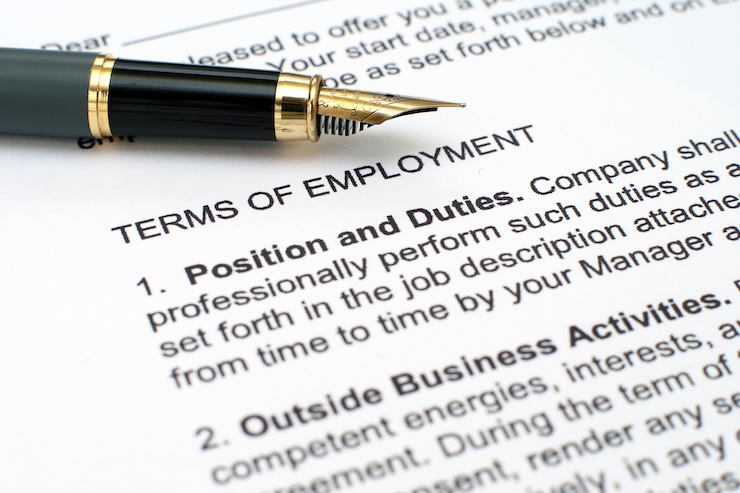This century is shaping up as the age of intellectual property (IP). Just take a look around at the great business battles, takeovers and issues of the day. They are no longer about fights for hard assets like plant and equipment. From the Napster internet furore, to Microsoft’s latest battle (with InterTrust Technologies), to David Beckham’s demands for control over his own ‘image rights’, IP is where today’s real money is made.
For those at the helm of small businesses, the IP issue is even more important. This is because many fledgling companies rely heavily (at least at the initial stage) on a single product or product idea. If it really is ground-breaking, it will need protecting. But if you don’t have the money or resolve to protect it, the idea you are staking your future on may turn out, eventually, to be worthless.
If you want to survive there are two choices. Invest in protection, in the form of patents (and maybe a bit of insurance to back it up). Or accept piracy but stay ahead of the game by coming up with new products or adding value with new design ideas.
Adopting a patent strategy
According to Iain Stansfield, a specialist IP solicitor with law firm Olswang, getting started on the patent road is problematic. This is because, he says, ‘patent strategies can prove a vicious circle for SMEs. Money is a huge driver, because business angels like a patent portfolio before they’ll invest, but very often the company needs the investment before it can snare the patent.’
A different take on the problem came from a recent poll of venture capitalists and investors. They all agreed that it does not warrant investing in promising technology if the owner doesn’t possess an IP strategy. Against this harsh position sits the fact that, typically, no more than 25 per cent of patents applied for in the UK are granted anyway. The risks being run couldn’t be higher.
For Stansfield, SME decision-makers have to get their patent strategy in order – there is no other means of proceeding. IP rights give their owner a legal monopoly, and therefore rights in the marketplace. ‘Rights can and should be exercised to prevent competitors from taking unfair advantage of protected property.’
With IP protection behind you, you can reap the financial rewards of your creativity. This adds value to the IP and the business that holds it, and this is what turns the intellectual property into an asset that can be bought, sold or licensed.
Put simply, if you do not have patents, you’ll be gobbled up in five minutes. If you do posses them, you might still be gobbled up, but you will survive for longer and you’re likely to make a bit of money in the process.
Search and record
There are obvious starting points for a growing business with a potentially lucrative product that won’t cripple your balance sheet. First and foremost, you need to conduct a patent search, so you know the idea is actually new! Run a search to see if your concept is unique and prove there’s been no ‘prior art’ that could invalidate your crucial patent further down the line. There’s no point spending money if someone else has already invented your product.
Another very practical point is to ‘record’ your intellectual property, establishing that you and your business developed a given product at a given time. This can be done as simply as mailing ideas and designs to yourself, and leaving the envelope sealed – the post mark acts as proof of when the concept was first conceived.
After this, you need to make sure your patent-ready product stays out of the public domain. When ideas, plans and diagrams are in their gestation period, make sure talk regarding them is restricted, and any employee contracts cover IP loopholes.
Patent protection costs
When it comes to costs, it’s “wave your finger in the wind” time. ‘It depends on the invention’s complexity and what competing technology exists,’ argues Stansfield. ‘If it’s a pharmaceutical product or an electrical component product with diagrams of complex circuit boards, then it’s going to be more expensive.’
As a rough guideline, the typical cost of drafting and submitting a patent application is £750 to £1,500, but could be more. If there is a lot of competition, then the patent must be carefully drafted so as to avoid infringing or overlapping with competitors. Further costs could arise if the application meets with opposition or resistance from third parties. You should draft a detailed, wide and correct application to give the business the greatest possible monopoly protection. The wider the scope of the claim, the better protected and more profitable the patent.
Every expert agrees that it’s worth spending more on your application because of the potential return on the 20-year monopoly you’d be granted. But don’t cut corners on a skilled patent draughtsman, because this expert should cut the likelihood of your patent infringing another (and therefore being invalidated).
Be selective
AIM-quoted Corac is a small, but intriguing IP and licensing hopeful with a market valuation of £18.6 million. The company’s patent strategy is quite typical for a small venture with big ambitions. Corac is focused on high-speed electrical direct drive turbo machinery, based on its knowledge of gas bearings, for which it holds several patents. Because of its relatively small size, it likes to apply for its patents in select countries only, where there’s a greater market opportunity.
‘We select very carefully in terms of the regions we patent in,’ explains finance director Roberta Miles. ‘They are mostly held in Great Britain, the United States, and key European territories, because of the expense. We use a patent attorney to draft up our submissions,’ she reflects, ‘because the attorney goes over the claim to maximise its protection and presentation. But we also carry out some of the technical stuff in-house, to use our knowledge and minimise costs.’
Arousing issues
Also quoted on AIM with a market value of £30 million, Futura Medical is a pharmaceutical and medical device group developing products combating sexual dysfunction in both men and women. These include MED2001, an over-the-counter treatment for erectile dysfunction that is being ‘tweaked’ ahead of phase three trials, condom safety device CSD500, and FLD 500, a female lubrication device.
Steered by chief executive James Barder, Futura has a variety of patents, which in the main are handled by the appositely named Withers & Rogers. ‘We start off our patents in the UK,’ he explains, ‘and then we roll out under the Patent Co-operation Treaty scheme. We don’t patent in every country. We go for the main commercial territories. Basically, we’re selective because of the costs.’ Barder also eschews infringement insurance. ‘We’ve looked at it, and had quotes for it, but we’ve decided not to,’ he reasons.
Case Study — Dyson’s dealings
Inventor James Dyson, the man behind the vacuum cleaners that bear his name, has based his business survival around patents. The first patents relating to the Dual Cyclone Technology’ used in its vacuum cleaners were filed back in 1980. Today, the company’s inventions are protected in a range of countries.
Dyson’s clear patent strategy is to protect all its inventions. According to the company, it spends ‘tens of thousands of pounds’ each year on patent renewals. Unlike smaller growing players, Dyson has its own team of in-house IP and patent experts based at its Malmesbury headquarters. It’s worth noting that even Dyson doesn’t bother paying the very expensive patent legal expenses insurance.
In a famed recent case, the vacuum cleaner designer took legal action against Hoover after the latter launched its Vortex cleaner, which used a similar process to Dyson’s dual cyclone model. Dyson eventually settled with Hoover in late 2002. Encouragingly, its patents were more than sufficient to remove the infringing Hoover machine from the market.
Hoover was found to have infringed Dyson’s patent and was ordered to pay £4 million in compensation by the High Court. The settlement was believed to be larger than any previous court award of damages in British patent case history. At the time, James Dyson said, ‘when we discovered Hoover had stolen one of our patents, we tried to settle the case to avoid a long and expensive three-year court battle, but Hoover refused. So we were forced to defend our patent against Hoover’s infringement. The patent system can work. I hope this encourages inventors who have their ideas stolen by multinational companies.’
Although any company could use Dyson’s technology when its patents expire, its strategy is to protect improvements as well as its fundamental technology. This means any competitor would have to resort to old technology in an attempt to imitate its products. The lesson from Dyson is to invest in your patents and protect them fiercely, if you have the resources to do so.
Patents Need to know
Patents apply to inventions with business applications and are granted by the Government to an inventor, giving him or her the right for a certain limited period (usually up to 20 years), to stop others making, using or selling the invention without permission.
Most patents are issued for improvements to existing technology and these developments usually have to be sufficiently complex to warrant a patent. Applications are submitted to The Intellectual Property Office – the official body to which fees are paid to keep UK patents in force.
Once granted, it becomes the inventor’s property, and can be sold, bought, rented or hired. Patents are territorial rights, so a UK Patent will only give the holder the rights within the UK and rights to stop others importing the patented product into the UK. As Iain Stansfield points out, ‘a patent is basically a deal with the UK Government.’
However, Stansfield points out that there is nothing to stop a rival filing overseas, in another territory. For more widespread protection therefore, you have to apply to the patent offices of the relevant countries. The good news for small growing businesses is that once they file in the UK, they then get a ‘priority period’ during which they can decide if they want to file overseas. For small companies wanting, say, protection in the European Union, this can prove a godsend, as they can stagger the costs involved.
Related: – Patent risk: understanding the best way to deal with it






